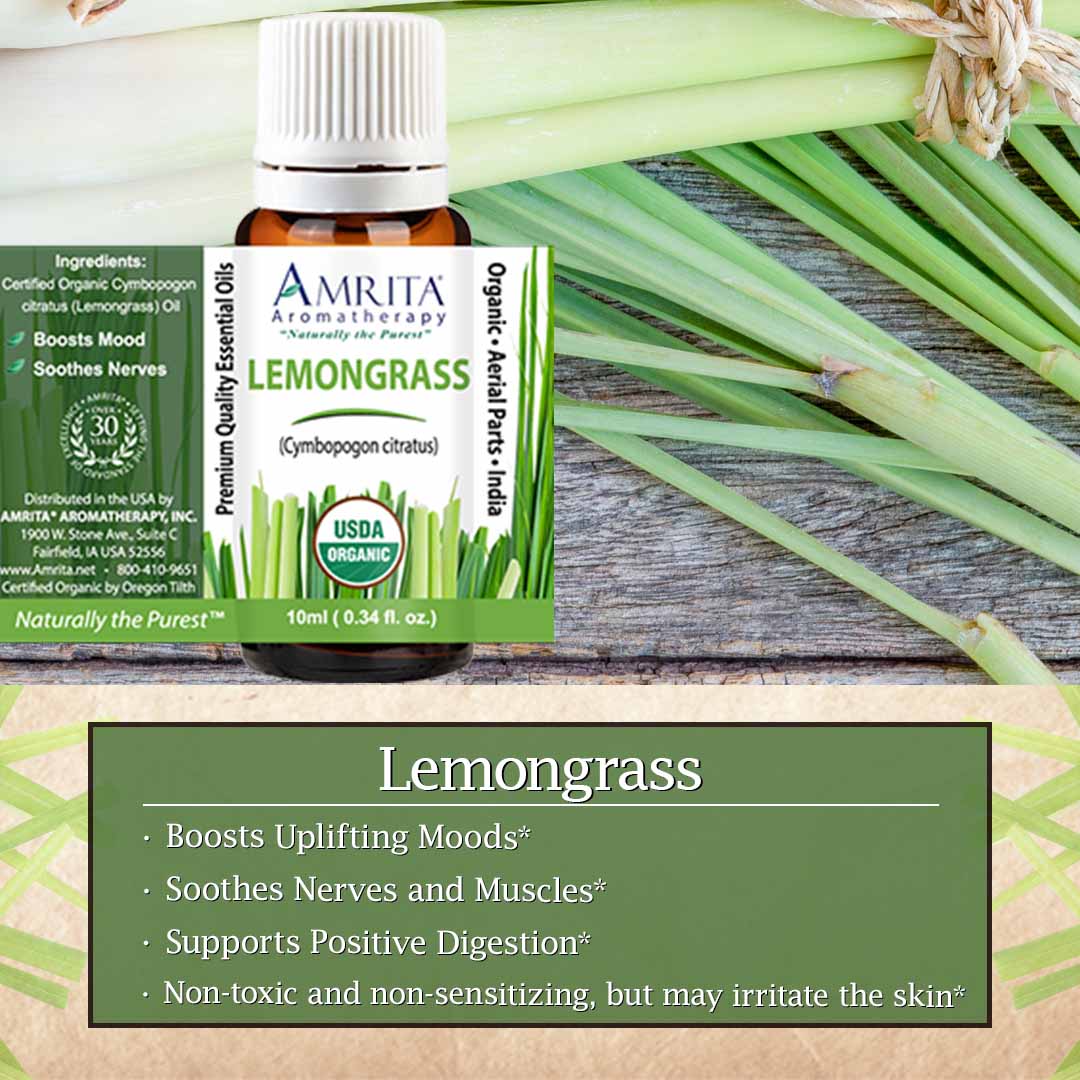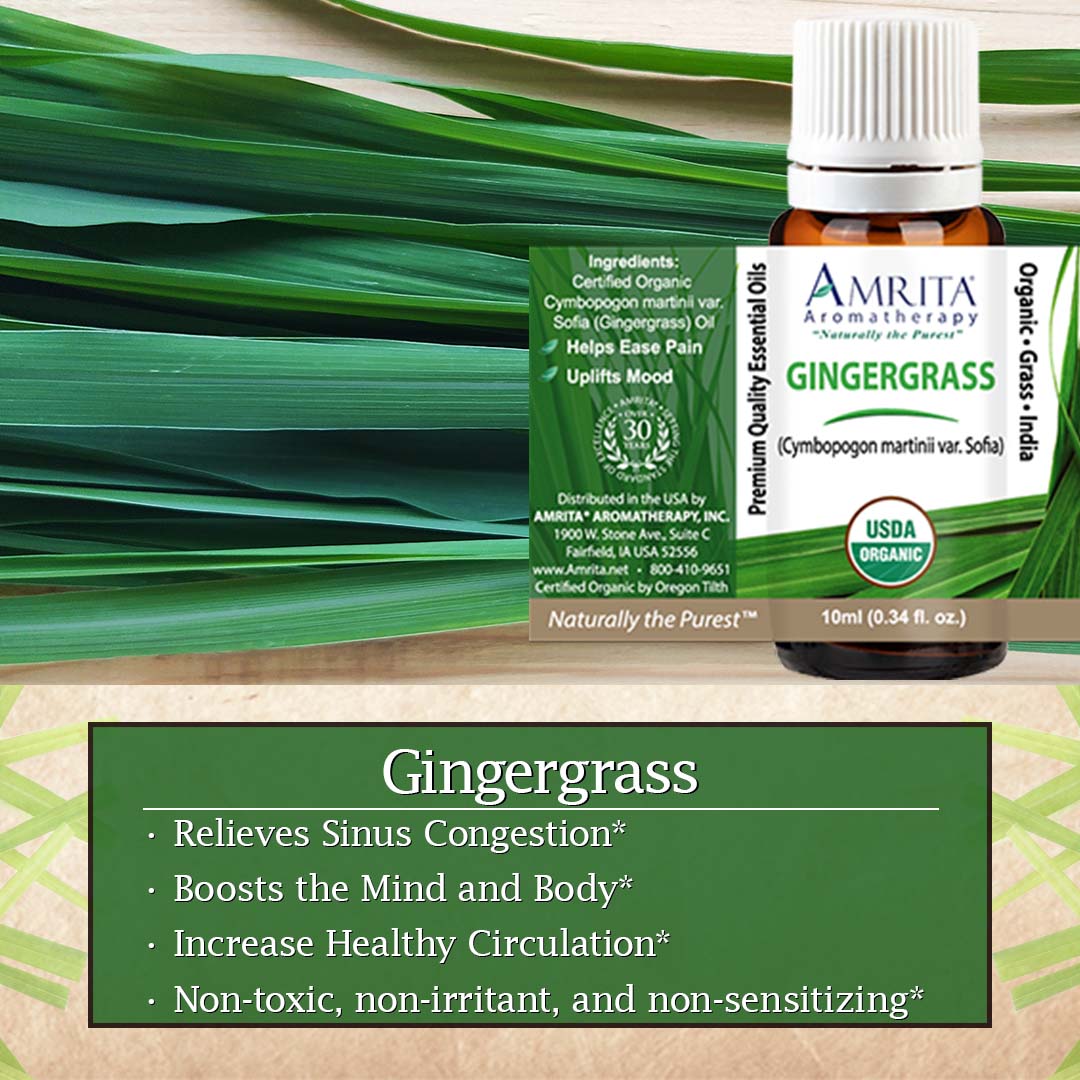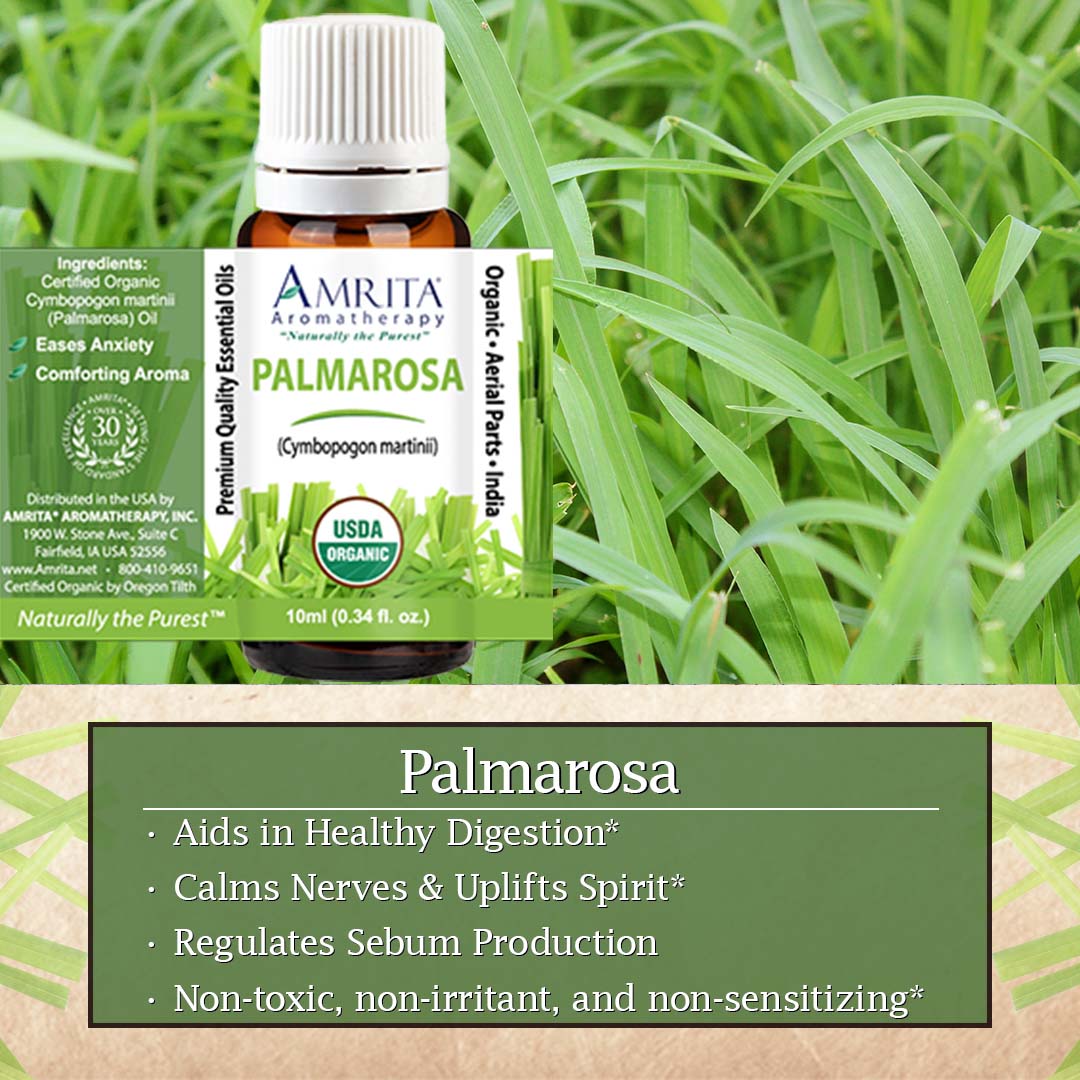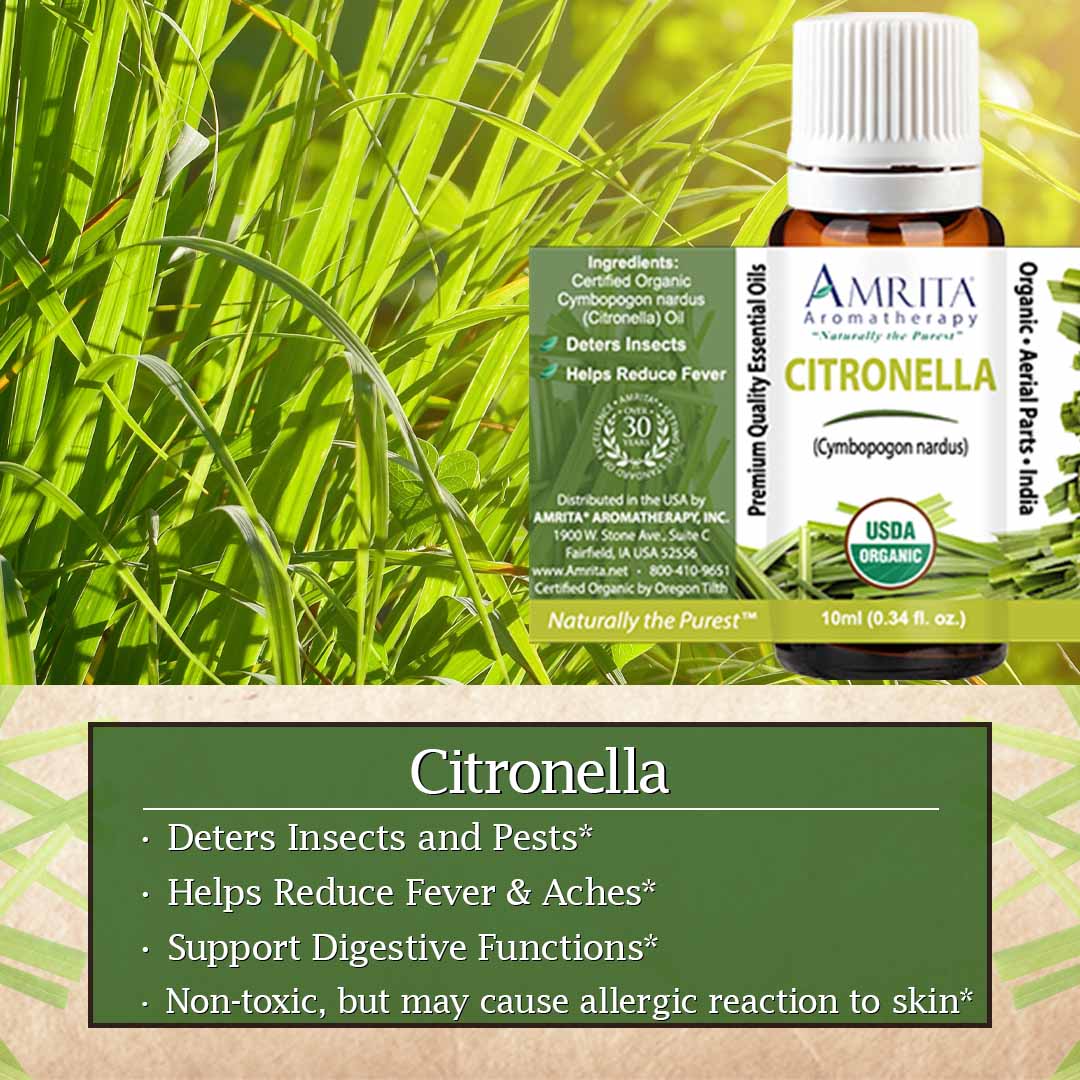This or That: Which Grass Should You Use?
Mar 21st 2024
Posted by Dr. Christoph Streicher and Chase F.
In the melodic world of essential oils, an aromatic orchestra masterfully performs a “symphony” of nature. Among the many virtuosos in this aromatic ensemble, Lemongrass, Gingergrass, Palmarosa, and Citronella Oils emerge as a unique section of this orchestra. What sets these oils apart is their shared botanical lineage – all of them belong to the distinguished Gramineae family, gracefully positioned within the genus Cymbopogon, forming a melodic cluster affectionately referred to as the “grasses.”
The purpose of this article is to delve into the harmonious world of these essential oils, as well as explore some of their history and botanical origins. Additionally, the article seeks to dissuade discerning consumers from the allure of substandard, adulterated, and synthetically altered “wannabe” products which currently pollute the market. Each of the four oils under discussion are available as a USDA Certified Organic Essential Oil from Amrita Aromatherapy, an industry paragon in purity and quality since 1989.
Lemongrass: Elevating the Senses
Lemongrass (Cymbopogon citratus) is native to Malaysia but has spread to many other tropical regions, including Southeast Asia, India, parts of Africa, and the Americas. It has served for centuries in Indian and Asian cuisines, enriching soups, curries, sauces, and teas, while also playing a vital role in medicinal traditions to address digestive concerns, inflammation, and fever.* In fact, Lemongrass has long been commonly referred to as “fever grass” by cultures that are well-acquainted with its abilities. By 1947, it had been introduced to Haiti, quickly leading to commercial production there and in Florida. Its robust, grassy appearance may not win any awards for aesthetics, but its practical value seems to know no bounds.
Lemongrass Essential Oil presents an aromatic profile characterized by its lemony, fresh, and slightly herbaceous essence complete with earthy undercurrents. A refreshing top note, it is regarded as having harmonizing effects on the nervous system, uplifting the mood and spirit while simultaneously alleviating symptoms of anxiety and stress.* The universally cherished scent of Lemongrass makes it a coveted ingredient in perfumes, deodorizers, soaps, and cleansers. This is due, in part, to its natural antimicrobial, antiseptic, bactericidal, fungicidal, and insecticidal properties.* Unfortunately, many Lemongrass products in today’s marketplace, just as others mentioned in this article, are often sub-par or adulterated. Amrita’s USDA Certified Organic Lemongrass Essential Oil, however, is meticulously sourced from India, adhering to the utmost standards of purity, quality, and consistency.
Lemongrass Essential Oil exhibits an impressive range of physically therapeutic effects as well. Its naturally detoxifying properties hold immense promise for digestive, liver, kidney, bladder, and pancreatic health, as well as fortifying the overall immune system.* Its analgesic and anti-inflammatory prowess can help to quell pain stemming from a variety of conditions, including but not limited to those associated with arthritis, headaches, migraines, sore muscles, achy joints, cramps, and spasms.* Remarkably, it may even surpass its counterparts in tackling digestive woes such as nausea, diarrhea, and even ulcers.* Lastly, the cost-effectiveness of Lemongrass Essential Oil, stemming from the accessibility of grass-derived products, underscores its exceptional effectiveness.
Application Methods for Lemongrass Essential Oil:
- Overall Topical: 3-5% Dilution (15-25 drops of Lemongrass per tablespoon of carrier oil)
- Whole Body Massage: 2% Dilution (10 drops of Lemongrass per tablespoon of carrier oil)
- Aromatic Bath: 2% Dilution (no more than 10 drops of Lemongrass in 1 ounce of bath salts, bath milk, or similar) before adding to a full tub of warm water
- Diffusion / Inhalation: add a few drops of Lemongrass to a nebulizer or nasal inhaler
Click HERE to read more on Lemongrass!
Gingergrass: The Spicier Sibling of Palmarosa
Gingergrass (Cymbopogon martinii var. sofia) is a closely related variant of Palmarosa, as indicated by their shared botanical nomenclature. If the “grasses” in this article can be considered cousins, then Gingergrass and Palmarosa are more akin to siblings. Originally from the Indian subcontinent and parts of Southeast Asia, Gingergrass manages to distinguish itself from Palmarosa in a number of ways, despite their shared origins and similar history. Like Palmarosa, it made its debut in ancient Ayurvedic medicine and eventually spread westward to Europe and eastward to Asia via Persian trade routes, finding its place in perfumes and soaps. Amrita proudly sources its USDA Certified Organic Gingergrass Essential Oil from India.
Gingergrass Essential Oil has an aroma that is spicier and woodier than that of Palmarosa, due in part to its contents of geranyl acetate and geranial. The essence of Gingergrass, when diffused and inhaled, is known to deter depression, stress, and anxiety while helping to combat brain fog and headaches.* On a cold, dreary day, it may be the ideal solution for providing a bit of much-needed sunshine.
Gingergrass also exhibits a “warmer” profile than that of Palmarosa, helping to relieve congestion and promote healthy circulation.* This characteristic proves invaluable for those seeking respite from achy joints and sore muscles, as it encourages healthy blood flow.* This warming quality also assists in the relief of respiratory symptoms such as cough, cold, and congestion.* Lastly, Gingergrass confers similar benefits to the skin as Palmarosa, helping to diminish blemishes by regulating sebum production.*
Application Methods for Gingergrass Essential Oil:
- Overall Topical: 1-2% Dilution (5-10 drops of Gingergrass per tablespoon of carrier oil)
- Whole Body Massage: 1% Dilution (5 drops of Gingergrass per tablespoon of carrier oil)
- Aromatic Bath: 1% Dilution (no more than 5 drops of Gingergrass in 1 ounce of bath salts, bath milk, or similar) before adding to a full tub of warm water
- Diffusion / Inhalation: add a few drops of Gingergrass to a nebulizer or nasal inhaler
Click HERE to read more on Gingergrass!
Palmarosa: The Elixir of Beauty
Palmarosa (Cymbopogon martinii) traces its grassroots, pun intended, to the Indian subcontinent, particularly in the regions of India and Pakistan. Also known as East Indian geranium, it was originally used in ancient Ayurvedic medicine and later in traditional Chinese medicine, renowned for its soothing benefits to the mind and spirit, as well as for its abilities to enhance the complexion of the skin, mitigate inflammation, and to alleviate fever.* Eventually, its use spread to Europe where it graced high-end soaps, lotions, and perfumes, one example being the high-end perfume brand Acqua di Parma. Palmarosa is now also grown in parts of Southeast Asia and South America.
The essential oil of Palmarosa is procured by steam-distillation of the carefully harvested leaves of the plant. While many cheap, adulterated versions of Palmarosa products can be found in the marketplace, Amrita Aromatherapy does not compromise as it sources its USDA Certified Organic Palmarosa Essential Oil from India using fair trade practices in the very land where it was first discovered. Its sweet, floral aroma works great as an air freshener for the surrounding environment as it is known to enchant the senses while providing a soothing, yet uplifting quality to the mind and spirit.* Many find that its aroma promotes free-flowing adaptability and a feeling of balance.*
Geraniol, geranyl acetate, and linalool are a few of the most active compounds within Palmarosa Essential Oil, helping to endow it with great therapeutic potential. It helps to balance sebum production in the skin, creating a more consistent complexion with fewer blemishes.* It helps to prevent infection in cuts and abrasions, helping them to heal more quickly.* Palmarosa is also regarded as having the ability to lessen fever, headaches/migraines, muscle/joint pain, and digestive discomfort.* Furthermore, it is one of the few essential oils considered safe for pets (consult with a veterinarian before use), particularly in the treatment of skin conditions such as fungus, warts, or minor cuts and abrasions.*
Application Methods for Palmarosa Essential Oil:
- Overall Topical: 2-3% Dilution (10-15 drops of Palmarosa per tablespoon of carrier oil)
- Whole Body Massage: 1-2% Dilution (5-10 drops of Palmarosa per tablespoon of carrier oil)
- Aromatic Bath: 1-2% Dilution (no more than 5-10 drops of Palmarosa in 1 ounce of bath salts, bath milk, or similar) before adding to a full tub of warm water
- Diffusion / Inhalation: add a few drops of Palmarosa to a nebulizer or nasal inhaler
Click HERE to read more on Palmarosa!
Citronella: Nature’s Mosquito Repellent and more…
Citronella (Cymbopogon nardus) has been utilized as a trusted natural remedy for ages, particularly in Australasia, where indigenous peoples initially harnessed its power to deter insects, alleviate fevers, soothe digestive maladies, quell headaches, and combat pain.* It also has long been recognized for its antiparasitic, antifungal, and antibacterial properties.* Gaining popularity throughout the Western world in and around the 1800’s, it was eventually registered by the U.S. Environmental Protection Agency as a plant-based insect repellent in 1948, classified as a biopesticide with a non-toxic mode of action. Amrita’s USDA Certified Organic Citronella Essential Oil is proudly sourced from India, held to the highest standards of quality, consistency, and purity.
Citronella Essential Oil takes the plant’s therapeutic benefits to the next level via steam-distillation of the plant’s aerial parts, resulting in the most potent manifestation of Citronella’s naturally occurring active ingredients. Most find its grassy, citrusy, lemony aroma (considered a “top” note) to be very pleasant, though some describe it as “relaxing” while others regard it as “energizing.”* Imbued with the ability to regulate serotonin production, it can help reduce symptoms of restlessness and unease while imparting a sense of calmness that refreshes the spirit, paving the way for more happy adventures down life’s road.* And perhaps the greatest bonus of its aromatic essence is that pesky insects find it to be repulsive, even as we humans adore it.*
Equally impressive are the physically therapeutic benefits exhibited by Citronella Essential Oil. One of its main active compounds, citronellal, demonstrates robust analgesic properties which can reduce aches and pains in joints and muscles as it delivers warmth and comfort.* Furthermore, its anti-inflammatory and febrifuge qualities can help reduce symptoms of fever, headaches, migraines, and rheumatism.*
Application Methods for Citronella Essential Oil:
- Overall Topical: 1-2% Dilution (5-10 drops of Citronella per tablespoon of carrier oil)
- Whole Body Massage: 1-2% Dilution (5-10 drops of Citronella per tablespoon of carrier oil)
- Aromatic Bath: Dilute up to 2% (no more than 10 drops of Citronella in 1 ounce of bath salts, bath milk, or similar) before adding to full tub of warm water
- Diffusion / Inhalation: add a few drops of Citronella to a nebulizer or nasal inhaler
Click HERE to read more on Citronella!
Final Thoughts from the Amrita Team…
While the “grasses” may not always enjoy the spotlight within the grand orchestra that is aromatherapy, they undoubtedly rise to the occasion and, in certain moments, take center stage. Do not be beguiled by their modest costs or their unassuming names. The aromas and therapeutic virtues of these oils are unmatched, and their widespread availability is a testament to the hardiness and sustainability of their sources.
However, beware of imitations! Amrita painstakingly sources these oils from India, the birthplace of the remarkable nature of these plants, and each has received the esteemed USDA organic certification. The symphonic tones they contribute to nature’s botanical orchestra resound with even greater purity when performed through the finest instruments by the most skilled players. Discover today how these grass-derived essential oils can complement your aromatherapy ensemble!
*These statements have not been evaluated by the Food and Drug Administration. These products are not intended to diagnose, treat, cure, or prevent any disease.









